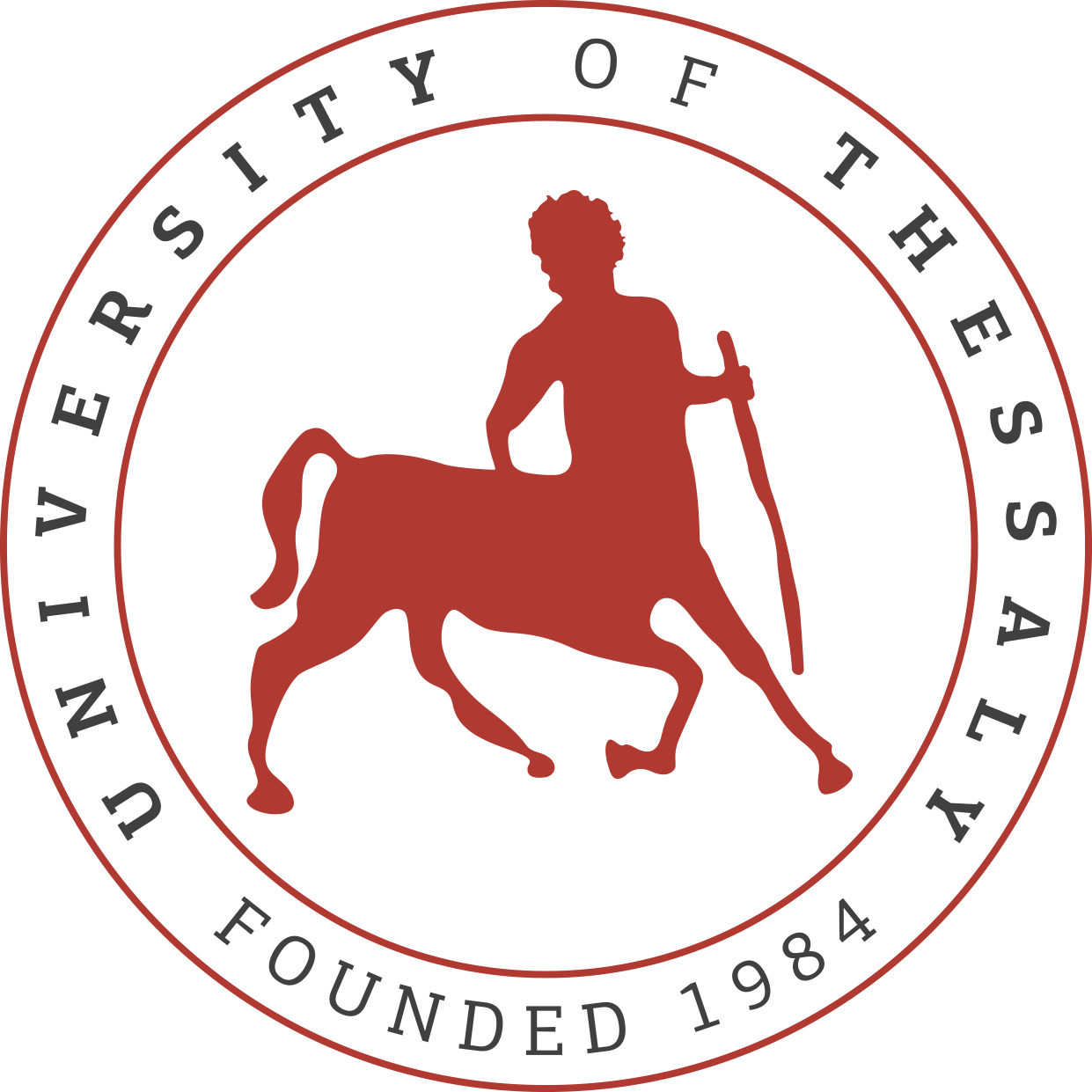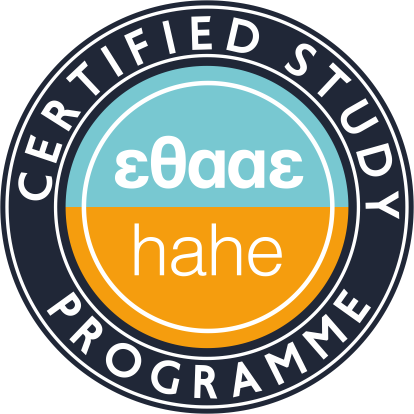2nd Semester – Creative experimentations with Mathematics, Science, Technology and Environment in formal and informal educational settings
ECTS Units: 12
Professor: Karasavvidis Ilias, Tsevreni Irida, Chronaki Anna, Siatras Anastasios, Ampatzidis Georgios
COURSE CODE A4-E
SEMESTER OF STUDIES B
COURSE TITLE
Creative Experiments with Mathematics, Natural Sciences, Technologies and Environment in Formal and Informal Education Practices
SELF-ENDED TEACHING ACTIVITIES
in case the credits are awarded in separate parts of the course e.g. Lectures, Laboratory Exercises, etc. If the credits are awarded uniformly for the entire course, enter the weekly teaching hours and total credits
WEEKLY
TEACHING HOURS 3
CREDIT UNITS 12
Teaching activities include teaching the unit once a week
COURSE TYPE MANDATORY
PREREQUISITE COURSES:-
LANGUAGE OF INSTRUCTION and EXAMINATIONS: GREEK
IS THE COURSE OFFERED TO ERASMUS STUDENTS NO
ELECTRONIC COURSE PAGE
(URL) https://eclass.uth.gr/courses/ECE_P_107/
2. LEARNING OUTCOMES
Learning results
The learning outcomes of the course are described, the specific knowledge, skills and abilities of an appropriate level that the students will acquire after the successful completion of the course.
Consult Appendix A
Description of the Level of Learning Outcomes for each study cycle according to the Qualifications Framework of the European Higher Education Area
Descriptive Indicators for Levels 6, 7 & 8 of the European Qualifications Framework for Lifelong Learning and Annex B
Comprehensive Guide to Writing Learning Outcomes
Upon successful completion of the course, the student will be able to:
- Understands mathematical concepts as critical knowledge for the reconstruction and de/construction of dominant forms of regularity in physical and social space with the aim of including alterity and difference.
- Redefine the terms “excellence” & “equity” in scientific literacy.
- It argues in the context of social scientific issues.
- Designs instructional messages based on multimedia learning principles.
- Recognizes the pedagogical principles of designing an ecocentric environmental education program.
General Skills
Taking into account the general competences that the graduate must have acquired (as indicated in the Diploma Annex and listed below) in which / which of them is the course aimed at
- Search, analysis and synthesis of data and information, using the necessary technologies
- Autonomous work
- Teamwork
- Work in an interdisciplinary environment
- Respect for diversity and multiculturalism
- Respect for the natural environment
- Demonstrating social, professional and ethical responsibility and sensitivity to gender issues
- Exercise criticism and self-criticism
- Promotion of free, creative and inductive thinking
3. COURSE CONTENT
The course aims to introduce students to the modern concepts of education in the cognitive areas of Mathematics, Natural Sciences, Technologies and the Environment, as they are shaped by recent research in the related fields. The relationship of creativity with the above cognitive areas is highlighted and the role and relationships between teachers, students, learning objects and educational material or actions are redefined in this light. More specifically, the course aims to introduce students to various In particular, the objectives are specified as follows:
In the Mathematics section
- investigation and expansion of the nature of mathematical concepts in contexts of contact with space, place, the body, constructions, arts, play, etc.
- understanding of mathematical concepts as critical knowledge for the reconstruction and de/construction of dominant forms of regularity in physical and social space with the aim of including otherness and difference
- focus on pedagogical design issues for the co-production of mathematical activity as an ethical/aesthetic event with an emphasis on social justice and the democratization of education.
Unit of Natural Sciences
- highlighting students’ perceptions and teaching practices in the teaching of ecology
- presentation of the use of narrative in science teaching
- students’ familiarity with argumentation in the context of socio-scientific issues
- highlighting contemporary considerations and considerations in literacy in the natural sciences
- redefining “excellence” & “equity” in scientific literacy.
In the Information and Communication Technologies section
- “reading” and “writing” digital multimodal messages
- understanding dimensions of new media sculpture
- familiarity with the Theory of Multimedia Learning
- designing instructional messages based on multimedia learning principles
- understanding of theories of digital play and learning
- delving into empirical research examining the contribution of digital gaming to learning
In the Environment section
- the approach of ecocentric currents of ecological thinking, pedagogical research and practice and teaching methodology in the context of the interdisciplinary dialogue conducted on the human-nature relationship
- familiarity with the ecocentric paradigm in environmental education with a focus on enhancing empathy for the non-human world.
4. TEACHING AND LEARNING METHODS – ASSESSMENT
DELIVERY METHOD
Face to face, Distance learning etc.
Discussion, exercises, lecture, article study, video viewing.
USE OF INFORMATION AND COMMUNICATION TECHNOLOGIES
Use of T.P.E. in Teaching, in Laboratory Education, in Communication with students
Use of ICT in teaching (eclass, slide presentation software, educational software, video conferencing software).
Use of ICT in communication with students (email, eclass).
TEACHING ORGANIZATION
The way and methods of teaching are described in detail.
Lectures, Seminars, Laboratory Exercise, Field Exercise, Literature Study & Analysis, Tutorial, Internship (Placement), Clinical Exercise, Art Workshop, Interactive Teaching, Educational Visits, Study Preparation (Project), Writing Paper / Assignments, Artistic Creation, etc. etc.
The student’s study hours for each learning activity as well as unguided study hours according to ECTS principles are listed
Activity
Semester Workload
Choose
70
Exercises
30
Literature study & analysis
100
Writing a paper
100
STUDENT EVALUATION
Description of the evaluation process
Assessment Language, Assessment Methods, Formative or Deductive, Multiple Choice Test, Short Answer Questions, Essay Development Questions, Problem Solving, Written Assignment, Report / Report, Oral Examination, Public Presentation, Laboratory Work, Clinical Patient Examination, Artistic Interpretation, Other / Others
Explicitly defined evaluation criteria are mentioned and if and where they are accessible by students.
The evaluation of the students is done in the Greek language. The evaluation of the students is done by the preparation of group or individual work. Assignments are graded using explicitly defined evaluation criteria
5. RECOMMENDED-BIBLIOGRAPHY
Suggested Bibliography:
– Related scientific journals:
Mathematics Unit
Gellert, U. and Jablonka, E. 2007. Mathematisation and DeMathematisation: social, philosophical, and educational ramifications. Sense Publishers.
Pinxten, R. 2016. MultiMathemacy: Anthropology and Mathematics Education. Springer.
Chronaki, A. 2018. Mathematics out in the wild. Journal of Research in Mathematics Education
Chronaki, A. (2011a). Disrupting development as the quality/equity discourse: Cyborgs and subalterns in school technoscience. In B. Atweh, M. Graven, W. Secada and P. Valero (Eds.). Mapping equity and quality in mathematics education (pp. 3-21). Springer.
Chronaki, A. (2018). The Unbearable Lightness of Dis|appearing Mathematics: Or, life and reason for the citizen at times of crisis, The Mathematics Enthusiast, 15(1), 8-35. https://doi.org/10.54870/1551-3440.1415
Chronaki, A., Kollosche, D. (2019). Refusing mathematics: a discourse theory approach on the politics of identity work. ZDM Mathematics Education, 51, 457–468. https://doi.org/10.1007/s11858-019-01028-w
Chronaki, A. (2019). Affective bodying of mathematics, children, and difference: choreographing ‘sad affects’ as affirmative politics in early mathematics teacher education. ZDM Mathematics Education, 51, 319–330. https://doi.org/10.1007/s11858-019-01045-9
Chronaki, A. & Yolcu, A. (2021). Mathematics for ‘citizenship’ and its ‘other’ in a ‘global’ world: critical issues on mathematics education, globalization, and local communities. Research in Mathematics Education, 23(3), 241-247. https://doi.org/10.1080/14794802.2021.1995780
Chronaki, A., Planas, N., & Svensson Källberg, P. (2022). Onto/Epistemic Violence and Dialogicality in Translanguaging Practices Across Multilingual Mathematics Classrooms. Teachers College Record, 124(5), 108–126. https://doi.org/10.1177/01614681221104040
Chronaki, A. & Lazaridou, E. (2022). Subverting Epistemicide through ‘the Commons’: Mathematics as Re/making Space and Time for Learning. In: E., Vandendriessche and R., Pinxten (eds) Indigenous Knowledge and Ethnomathematics. Springer, Cham. https://doi.org/10.1007/978-3-030-97482-4_6
Everett, Caleb. 2017. Numbers and the Making of Us: Counting and the Course of Human Cultures. Harvard University Press.
Kawal Leal Ferreira, M. 2015. Mapping Time, Space, and the Body: Indigenous knowledge and Mathematical thinking in Brazil. Sense Publishers.
Ingold, T. 2007. A brief history of Lines. Routledge.
Knijnik, Gelsa. Ethnomathematics and the politics of mathematics education: reflections on a research-project developed with the Brazilian Landless Movement
Chronaki, A. 2012. The ‘right’ to the right to education: the aftermath of an ethnographic experiment on school mathematics. In A. Lydakis (ed.). Social Inequalities in Greece: The case of the Roma. Athena. Alexandria. pp. 105-131
Chronaki, A. 2012. Numerical problem solving as a place of producing alterity. Social Research Review, 137-138 A’-B’, 2012, 173-200.
Unit of Natural Sciences
Ampatzidis, G., & Ergazaki, M. (2018). Challenging Students’ Belief in the ‘Balance of Nature’ Idea. Science & Education, 27(9), 895–919.
Ampatzidis, G., & Ergazaki, M. (2021). How Did Darwin Prefer His Tea? Science & Education.
Dawson, V. M., & Venville, G. (2010). Teaching strategies for developing students’ argumentation skills about socioscientific issues in high school genetics. Research in Science Education, 40(2), 133-148.
Hadzigeorgiou, Y. (Ed.) (2016). Imaginative Science Education: The Central Role of Imagination in Science Education. Cham: Springer International Publishing.
Jordan, R., Gray, S., Demeter, M., Lui, L., & Hmelo-Silver, C. E. (2009). An Assessment of Students’ Understanding of Ecosystem Concepts: Conflating Ecological Systems and Cycles. Applied Environmental Education & Communication, 8(1), 40–48.
Freire, P. (1977). The treatment of the oppressed. Athens: Kedros.
Koukouridis, A., Siatras, A., Pekhtelidis, I., & Chronaki, A. (2021). A critical investigation of the intensification of mathematics and science curricula in early childhood education. In T. Theodoros & H. Zagos (Eds.), Society, politics & education: Sociology of education and educational policy: research sections (pp. 357-369). Athens: Pedio.
Siatras, A. & Christidou, B. (2019). “I don’t think all kids can learn everything”: From educational resignation to pedagogical optimism for early childhood science teaching. In P. Pantidos (Ed.), The Role of Science in Preschool Education (pp. 36-54). Athens: New Technologies Publications.
Tate, W. (2001). Science education as a civil right: Urban schools and opportunity-to-learn considerations. Journal of Research in Science Teaching, 38(9), 1015-1028.
Unit of Information and Communication Technologies
Block, B. (2008). The visual story: creating the visual structure of film, tv, and digital media (2nd ed). Oxford, UK: Focal Press.
Bordwell, D. & Thompson, K. (2008). Film art: an introduction (8th ed). NY: McGraw-Hill.
Brown, B. (2016). Cinematography: theory and practice: image making for cinematographers and directors. Taylor & Francis.
Gee, J.P. (2003). What videogames have to teach us about learning and literacy. NY: Palgrave macmillan.
Kim, S., Song, K., Lockee, B. & Burton, J. (2018). Gamification in Learning and Education. Enjoy Learning Like Gaming. London: Springer. Ma, M. & Oikonomou, A. (2017). Serious games and edutainment applications, vol II. London: Springer.
Koumi, J. (2006). Designing Video & Multimedia for Open & Flexible Learning. London: Routledge.
Ma, M., Oikonomou, A. & Jain, L.C. (2011). (Eds.). Serious games and edutainment applications. London: Springer.
Manovich, L. (2001). The language of new media. MIT press.
Manovich, L. (2013). Software takes command. NY: Bloomsbury
Mayer, R.E. (2009). Multimedia learning (2nd edition). Cambridge, UK: Cambridge University Press.
Salen, K. & Zimmerman, E. (2004). Rules of play: game design fundamentals. Cambridge Massachusetts: The MIT Press.
Schwartz, D. L., & Hartman, K. (2007). It is not television anymore: Designing digital video for learning and assessment. In R. Goldman, R. Pea, B. Barron, & S. J. Derry (Eds.), Video research in the learning sciences (pp. 349-366). Mahwah, NJ: Lawrence Erlbaum Associates.
Shaffer, D.W. (2006). How computer games help children learn. NY: Palgrave.
Steinkuehler, C. & Squire, K. (2016). Videogames and Learning. K. Sawyer (Ed.), Cambridge Handbook of the Learning Sciences, 2nd Ed. NY: CambridgeUniversityPress.
Environment Unit
Georgopoulos, A. (2002). Environmental Ethics. Athens: Gutenberg.
Karageorgakis & Georgopoulos (2005). When Environmental Ethics Meets Political Ecology. In: Georgopoulos, A. Environmental Education. The new emerging culture. Athens: Gutenberg.
Tsevreni, I. (2020). The sense of awe and wonder when young children approach nature: rereading Rachel Carson. Environmental Education for Sustainability, 2(1), 42-52.
Tsevreni, I., (2021). Pedagogical principles and methods of strengthening young children’s relationship with the natural world. In V. Papavasileiou, E. Nikolaou, H. Hatzinikola, M. Kaila (ed.) “Biodiversity, social and cultural diversity. Athens: Interaction.
Naess, A. (1973) Theshallowandthedeep, longrangeecologymovement. A summary, Inquiry, 16(1-4), 95-100.
Educational Studies in Mathematics
Mathematics Education Research Journal
International Journal of Science Education
Science Education
Computers & Education
Journal of Computers in Education
Journal of Environmental Education
Journal of Outdoor and Environmental Education


